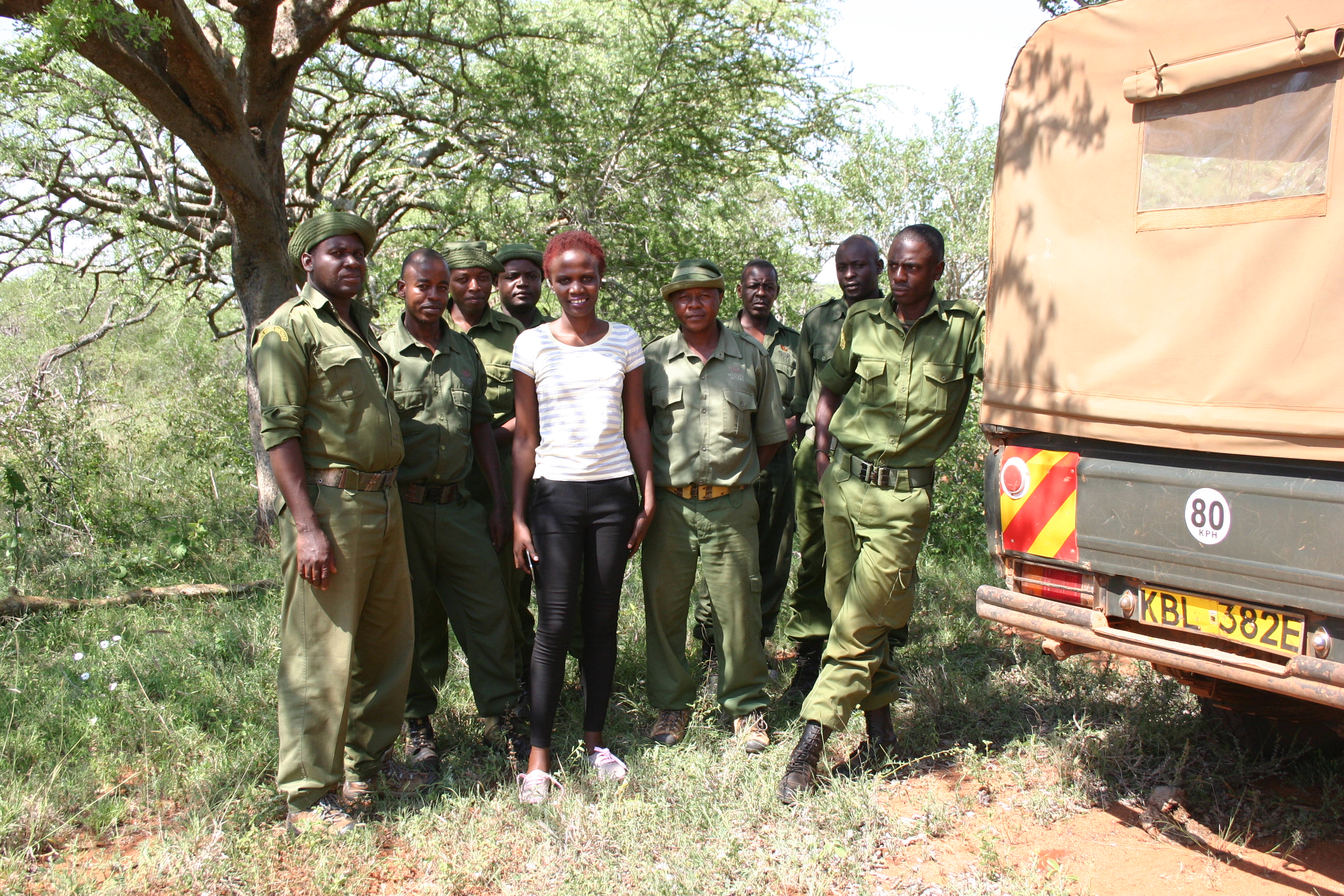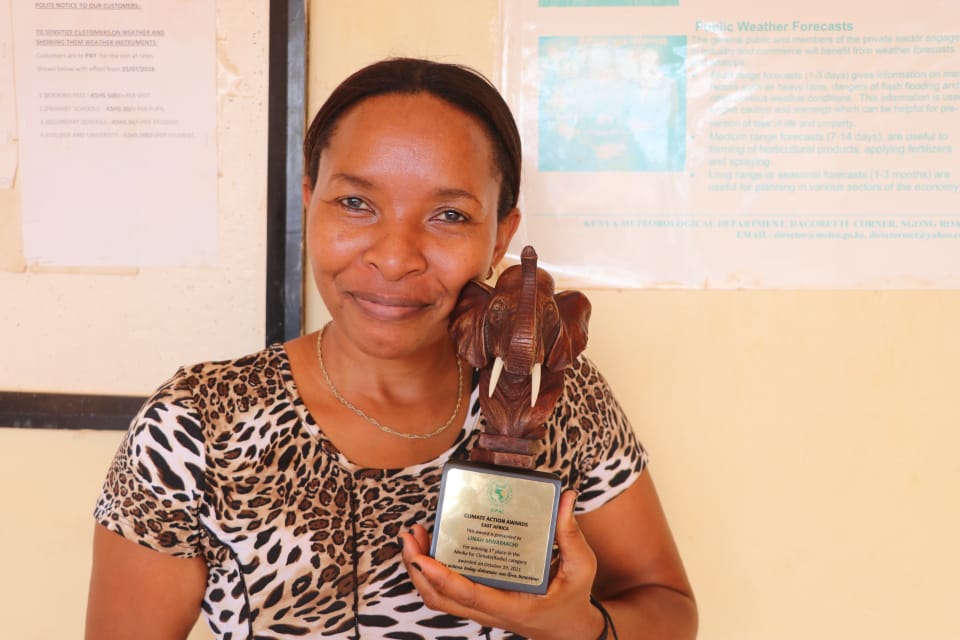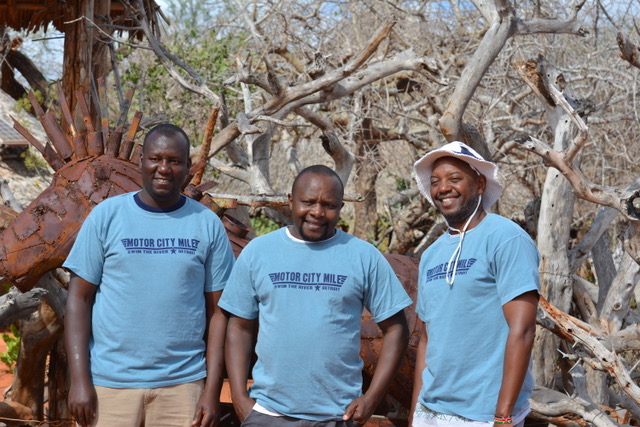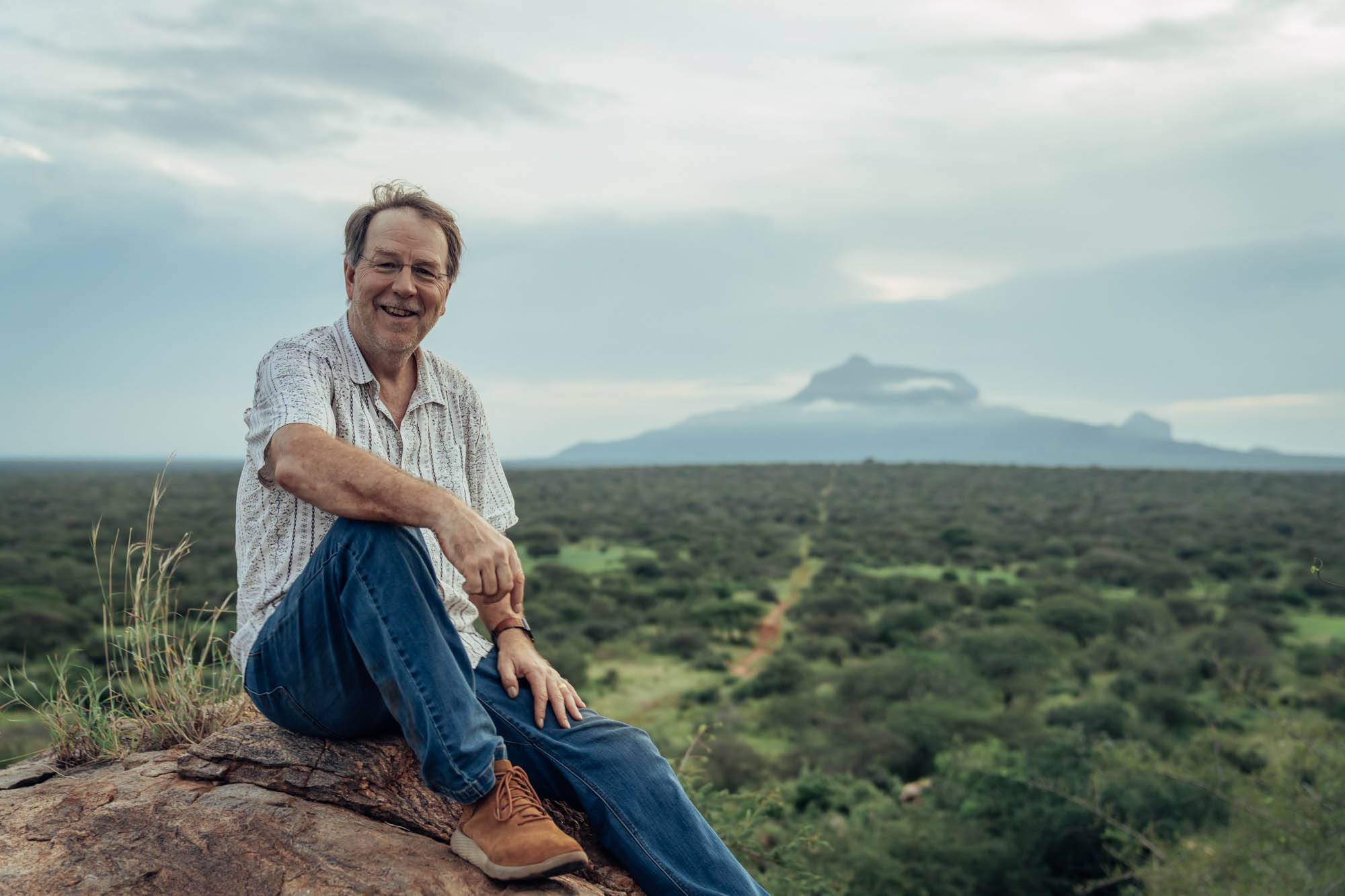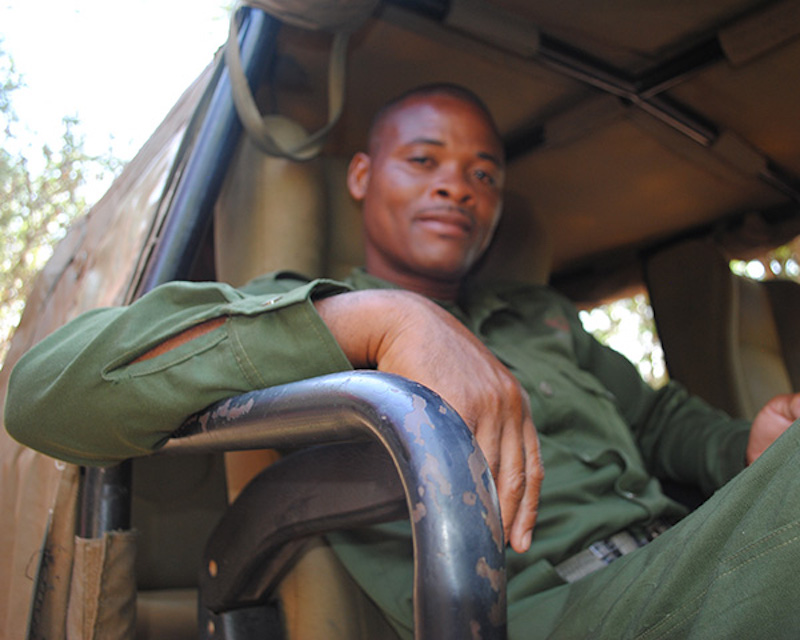
The Transformation of Ayub Vura; Former Poacher Turned Wildlife Protector
By Jane Okoth
Dressed in a smart dark green uniform, Ayub Vura goes about his daily duties as a ranger at Wildlife Works. His morning patrol in the thick bush starts at 7 am in the morning and ends at 4pm in the evening depending on the nature of the day’s responsibilities.
Ayub has been working as a Wildlife Works ranger since 2010. However, he is no ordinary ranger because 10 years ago, Ayub was one of the most notorious poachers in the Kasigau corridor region. Ayub Vura wasn’t born into a wealthy family. He grew up with limited education and then found himself with no job, which prompted him to look for ways of providing for his family as well as send his children to school.

“In 2007, I did not have a job and that was when I was approached by a man who convinced me that he would help me secure an income. The man told me he had experience in slaughtering wild animals and with my knowledge of the thick forest area, we began poaching,” he narrates.
Ayub’s first attempts as a poacher was not easy, at times having to walk for long distances and spend up to two days in the thick dryland forest. They had to carry extra clothing, and food items to sustain them on the way, always with the fear that they may be spotted by Kenya Wildlife Service rangers or by Wildlife Works rangers.
“When we managed to kill a large animal, we had to cut it into pieces and let it dry so we could pack it in our bicycles. We had to bring our meat home at night for fear of being noticed by the public who would then pass the information to police officers,” he says.
But how did Ayub and his team of poachers capture even the most powerful of animals?
Eric Sagwe, Wildlife Works’ Head Ranger explains a technique where animals are captured by the use of a flashlight and a large horn.
“This involves a normal flashlight bound together with 4 other flashlights with 8 to 12 batteries which increases its lighting capacity. Another bright flashlight is mounted on top of a motorbike with an amplified horn. This technique allows a poacher to confuse the animal by blinding it with the flashlight and ringing the horn at the same time. Meanwhile, the target animal fails to hear the approaching poacher’s footsteps thereby making it easier take it down with a machete” he says.
According to Ayub, their normal victims would be animals such as the dik dik, impala, giraffe, lesser kudu and even the buffalo. However, capturing a big animal such as a buffalo was risky due to the “torch and horn” method failing to work every time. Being out in the bush also had other challenges, such as being caught in the middle of a herd of elephants, which forced them to flee.
When Ayub and his partner made a kill, they would divide it equally and sell it to individuals in their respective villages making 2,000 to 2,800 KSh (~$19-$27) a day. But sometimes trading the bush meat was fruitless as some of the buyers failed to make payment. On some days, they would hunt the whole night and come home with nothing.

As well as being a poacher, Ayub was also a notorious charcoal burner as he used to cut trees at night for 2 years. He would go in to Taita ranch with a handcart armed with an axe and a flashlight. With the help of his partner, they would cut around 50 to 70 pieces of wood selling at Ksh 100 (less than a dollar) each.
Transformation from a Poacher to a Ranger
It was in 2010 when Ayub heard that there was a ranger recruitment exercise at Wildlife Works and decided to give it a try. By that time Ayub was tired of running, and he feared being arrested by the police or even killed by the animals.
“I presented myself to the Wildlife Works management and told them that I was once a poacher and ready to transform. I also told them that I was familiar with the area and offered my expertise of tracking animal and poacher footsteps,” he says.
Eric Sagwe, the Wildlife Works Head Ranger, remembers when he came face to face with Ayub during the first recruitment and interview exercise.
“Ayub had engaged us in running battles several times so it was interesting to hear him asking for a job. When we conducted the rangers’ recruitment exercise, most of the people who turned up for the interview were poachers and charcoal burners who had been previously convicted of wildlife crimes.” he says.
This caused Eric to be somewhat hesitant to bring them on board, but he recognized that these former bush meat poachers and charcoal burners were driven by poverty and the need to feed their families.
“I managed to convince my boss at the time to hire them and Ayub and several others joined the team. After the 3-month probation period, I realized that they were more than eager and ready to protect wildlife and the environment.” he says.
To date, Ayub is one of the best trackers at Wildlife Works, and is an expert in following a poacher’s movements, identifying whether tracks are day or a week old thereby helping rangers arrest the poachers.
According to Eric, Ayub and other former poachers have become the most valuable employees at Wildlife Works.
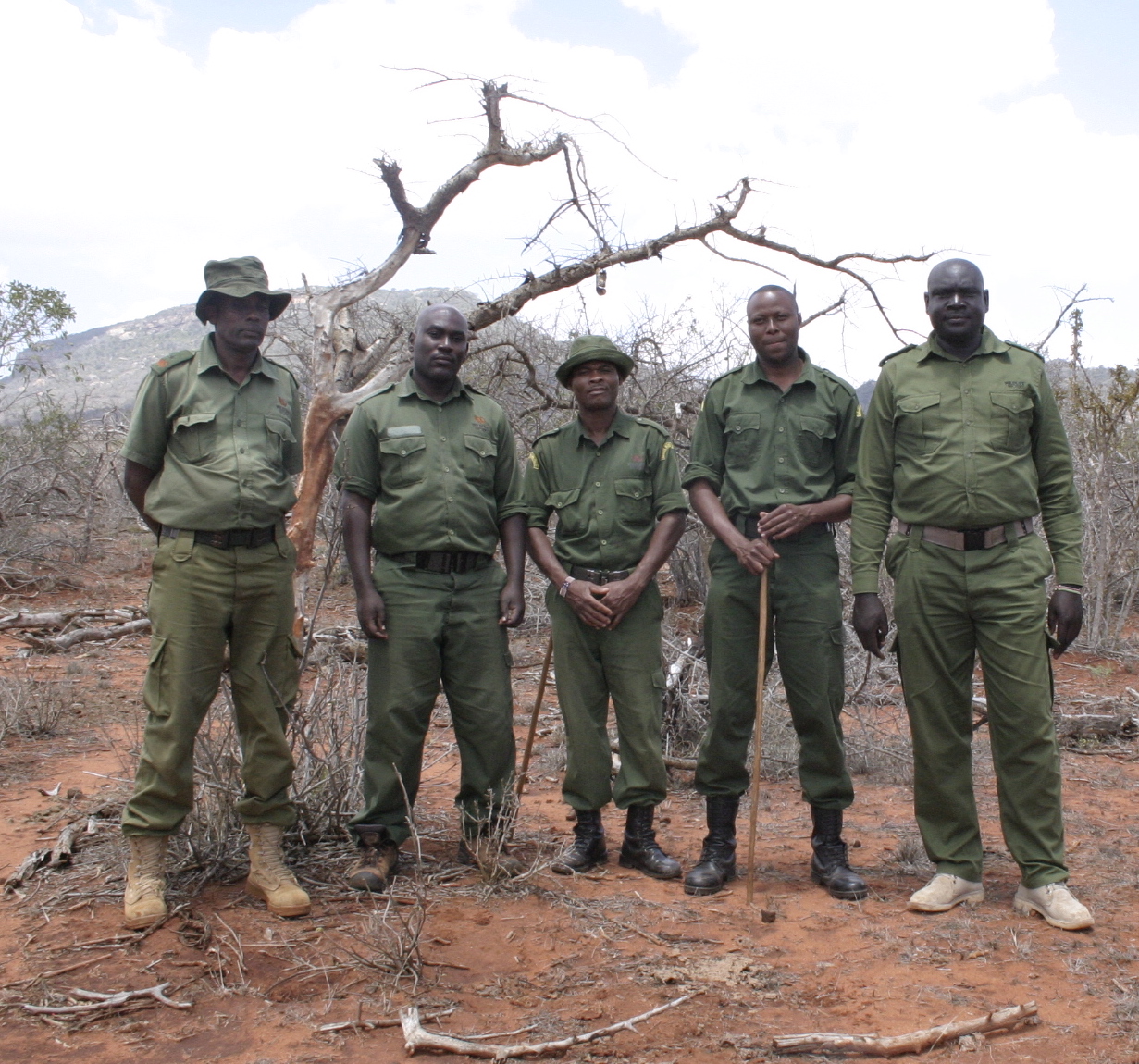
“When I was a poacher, I did not own a house and neither of my children went to school. But now with my job at Wildlife Works, my children are attending a good private school and I have built a comfortable house for myself.” says Ayub.
“I love my job at Wildlife Works and would never go back to being a poacher. I would also urge other poachers and charcoal burners to stop this activity and instead protect wildlife and the environment.”
Here at Wildlife Works, we are proud to have Ayub as one of our most dedicated rangers. We are happy that he managed to change his life for the better to protect animals and the environment.
